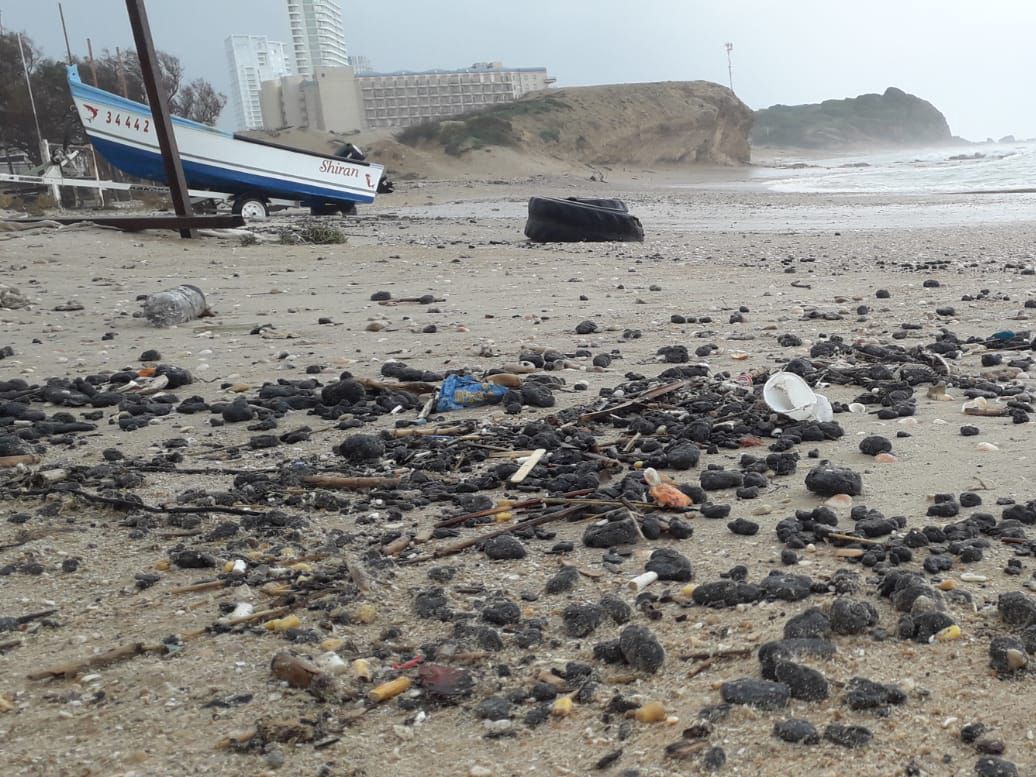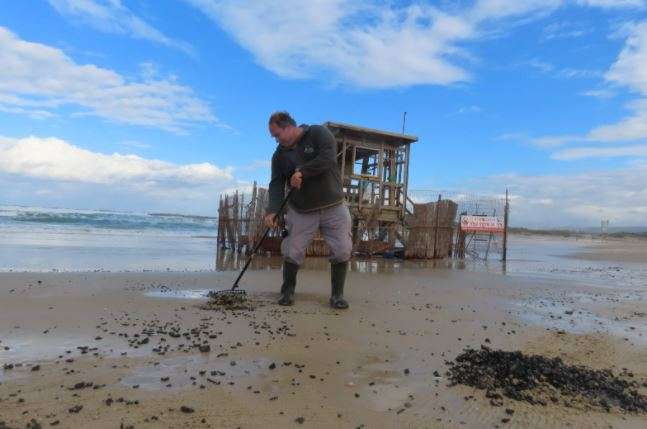Tel Aviv, Israel —(Map)
An oil spill has left most of Israel’s coastline covered with large globs of tar. The spill – the country’s worst in many years – has caused the government to close its beaches. A huge cleanup operation has begun.
Large chunks of dark, sticky tar were reported along Israel’s coast last week. An off-shore oil tanker is believed to be the source of the spill. Oil can form into tar balls as it is tossed by wind and waves on the ocean’s surface.

(Source: Marine Unit Inspectors, Ministry of Environmental Protection.)
Strong winds and large waves washed the tar ashore following an intense storm. Israel’s Environmental Protection Ministry (EPM) says that “dozens to hundreds” of metric tons of oil* may have been spilled.
Israel has about 119 miles (190 kilometers) of beaches. The country’s Nature and Parks Authority (NPA) reports that the oil spill has affected about 105 miles (170 kilometers) of those beaches.
😕
This image has not been loaded because of your cookie choices. To view the content, you can accept 'Non-necessary' cookies.
Israel has about 119 miles (190 kilometers) of beaches. The country’s Nature and Parks Authority reports that the oil spill has affected about 105 miles (170 kilometers) of those beaches.
The government has asked people to avoid going to the beach, since coming into contact with tar can irritate the skin and cause illness.
Several thousand workers and volunteers have come out to help clean up the tar-covered beaches. A number of volunteers had to be taken to the hospital after breathing in the air polluted by chemicals from the tar.
On Sunday, Prime Minister Benjamin Netanyahu and EPM leader Gila Gamliel visited the tar-polluted coast to see the damage for themselves.
😕
This image has not been loaded because of your cookie choices. To view the content, you can accept 'Non-necessary' cookies.
Several thousand workers and volunteers have come out to help clean up the tar-covered beaches (above). A number of volunteers had to be taken to the hospital after breathing in the air polluted by chemicals from the tar.
The tar has already had a big impact on the local wildlife. Volunteers were working quickly to rescue sea birds, turtles, and fish. Some animals were covered in oil or tar. Others had swallowed it. The body of a young whale was found washed up on shore. The whale appeared to have died after swallowing a black oily liquid.
There don’t appear to be any more oil slicks off of Israel’s coast, but as of Sunday, tar was still washing up on the shores. Strong waves are expected this week, which could make cleanup efforts more difficult by washing the sticky globs of tar from beach to beach.
😕
This image has not been loaded because of your cookie choices. To view the content, you can accept 'Non-necessary' cookies.
The tar has had a big impact on local wildlife. Volunteers were working quickly to rescue sea birds, turtles, and fish. Some animals were covered in oil or tar. Others swallowed it. Above, a worker at the Israeli Sea Turtle Rescue Center cleans a sea turtle.
Experts from Israel and Europe are still trying to figure out exactly what happened. The spill is believed to have taken place about a week ago, when there were strong storms in the area, but it’s still not clear what ship is responsible for the oil spill.
The European Union uses weather satellites to keep track of floating oil slicks in the Mediterranean. Scientists can often use what they know about weather patterns and the movement of ocean waters to figure out where an oil spill came from. Israel’s government says it has a list of about 10 ships that are the most likely sources for the spill.

(Source: Sarit Falchi Miara, Israel Nature and Parks Authority.)
The Israeli newspaper Haaretz reports that on Monday, a judge made an unusual decision about the event, making it against the law to publish any details that could identify the source of the oil spill during the next week.
The NPA says the spill is one of the biggest environmental disasters the country has ever had. Experts say it could take months, or even years, to complete the cleanup.
* One metric ton of oil is about 320 gallons (1,212 liters).
😕
This map has not been loaded because of your cookie choices. To view the content, you can accept 'Non-necessary' cookies.
